Dell EMC PowerEdge R7415 Storage
The Dell EMC PowerEdge R7415 configuration we received has both SAS3 12gbps support and NVMe support. The SAS3 drives were in an array of five SAS3 400GB SSDs. There were two 1.6TB NVMe drives on the right. In the middle are 17 hot-swap bays with blanks. We decided to save a bit of bandwidth for everyone and simply show the two sides. These drive bays use the same PowerEdge drive trays as other servers. There is no major difference for the AMD EPYC platform except that AMD EPYC 7001 single socket platforms have more PCIe lanes available (up to 128 on EPYC v. 48 on Xeon) so one can use a higher drive count to CPU ratio while also utilizing PCIe add-in cards.

The number one feature of the Dell EMC PowerEdge is NVMe hot swap. After the AMD EPYC launch in 2017, STH was first to discover that while AMD EPYC supports NVMe hot swap, it is slightly different than Intel’s implementation. As a result, launch platforms like the HPE Cloudline CL3150 were launched without NVMe hot-swap support. Over the past year, vendors like Dell EMC came to market with the feature working. We wanted to test this functionality so we pulled one of the NVMe drives while the system was running. We did so twice for good measure. This is what happened:
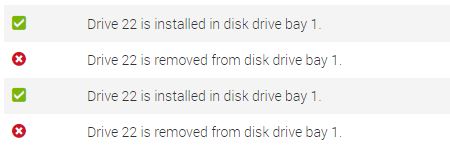
The iDRAC 9 logged the removal and re-insertion event. Unlike many competitive systems, the Dell EMC PowerEdge R7415 took this in stride and did not crash. Everything works as one would expect with an Intel Xeon system.
This is a big deal. There are still AMD EPYC servers in the market that require a full power off to even insert an NVMe SSD for capacity upgrades. With the PowerEdge R7415, this is seamless while in platforms that cannot do the same it requires downtime.
The physical storage is, as you probably expect, tied into iDRAC 9. What that means is that one can see storage in the web management interface and that configuration can be passed to and from fleet management tools.
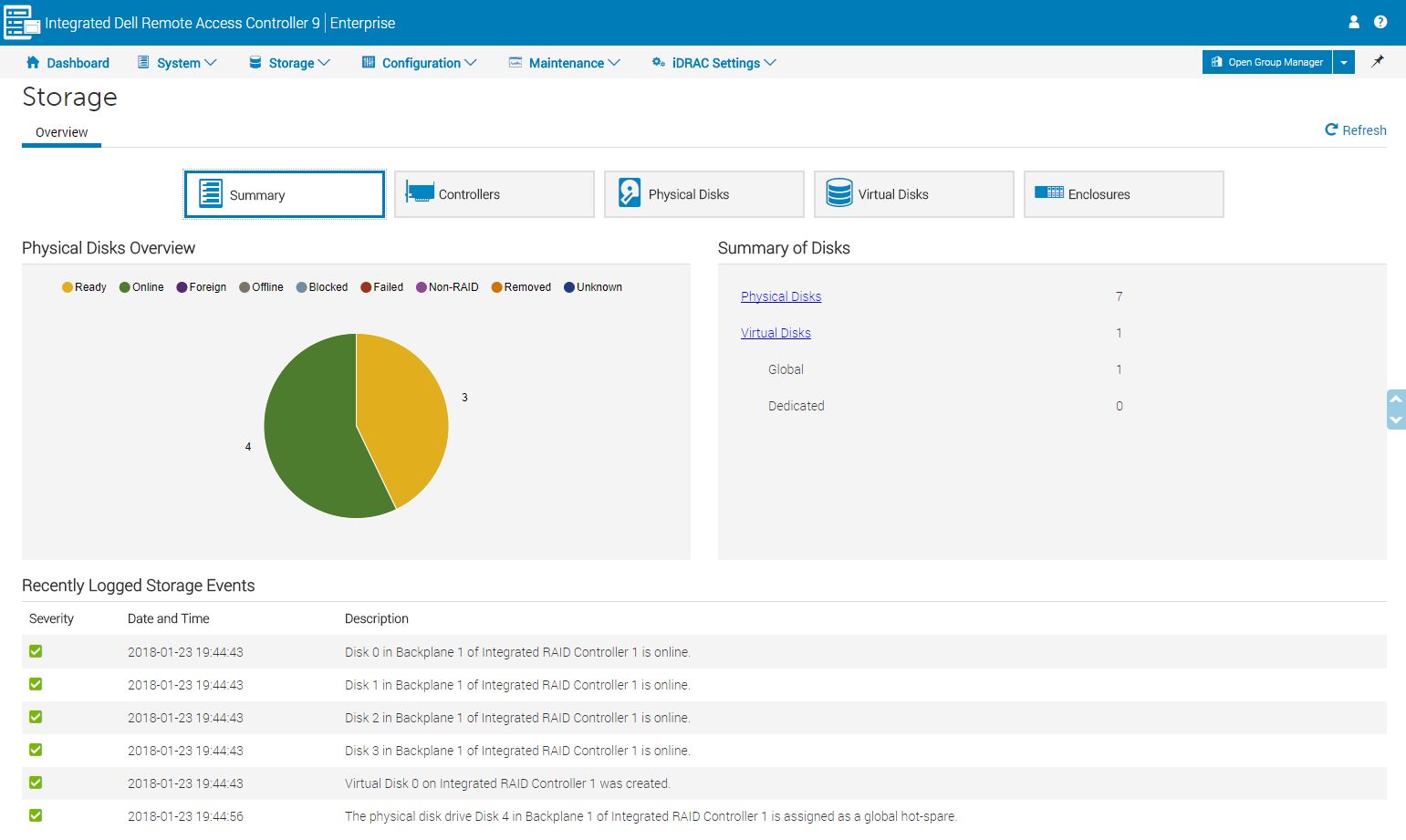
One can see the storage controllers and health of the PERC power backups from iDRAC.
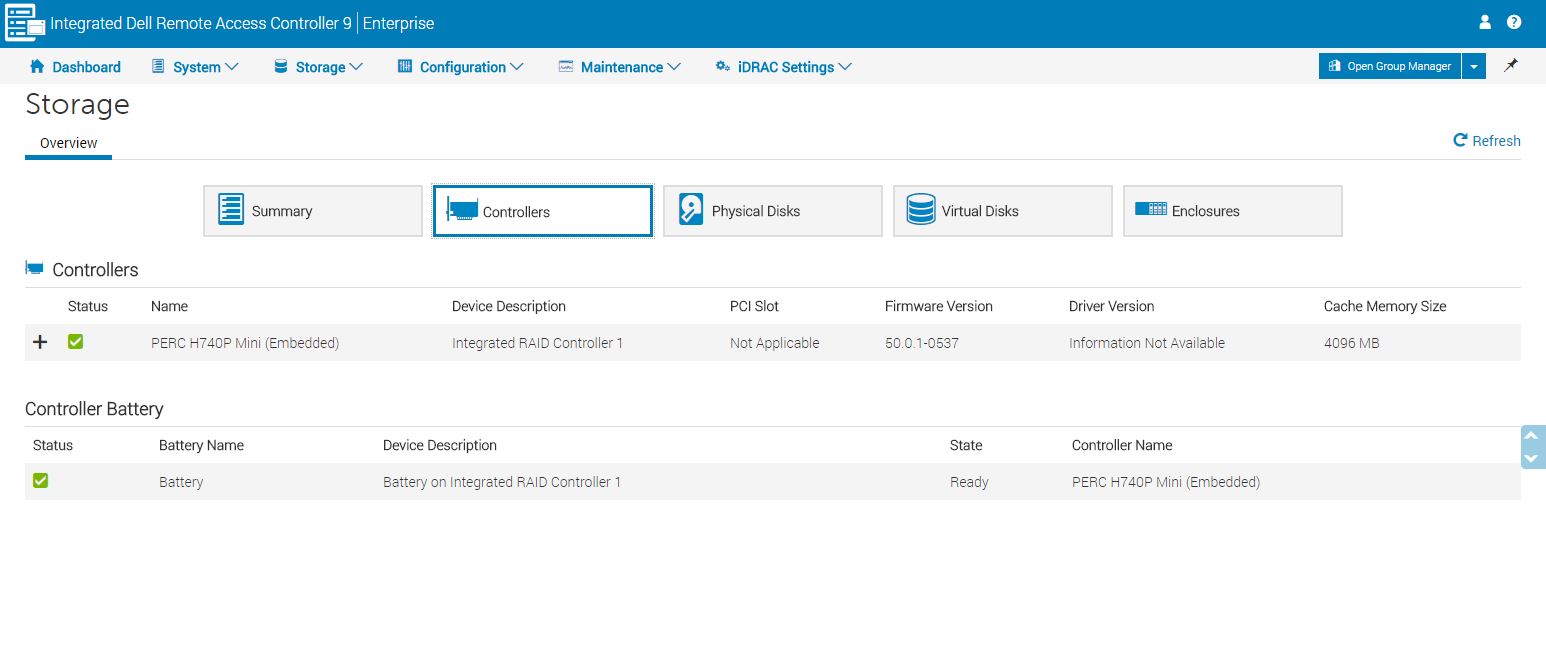
One can also delve into disks. If you have ever experienced a need to upgrade firmware on drives and needed to find which disks in systems need the update, you will completely understand the power of this information.
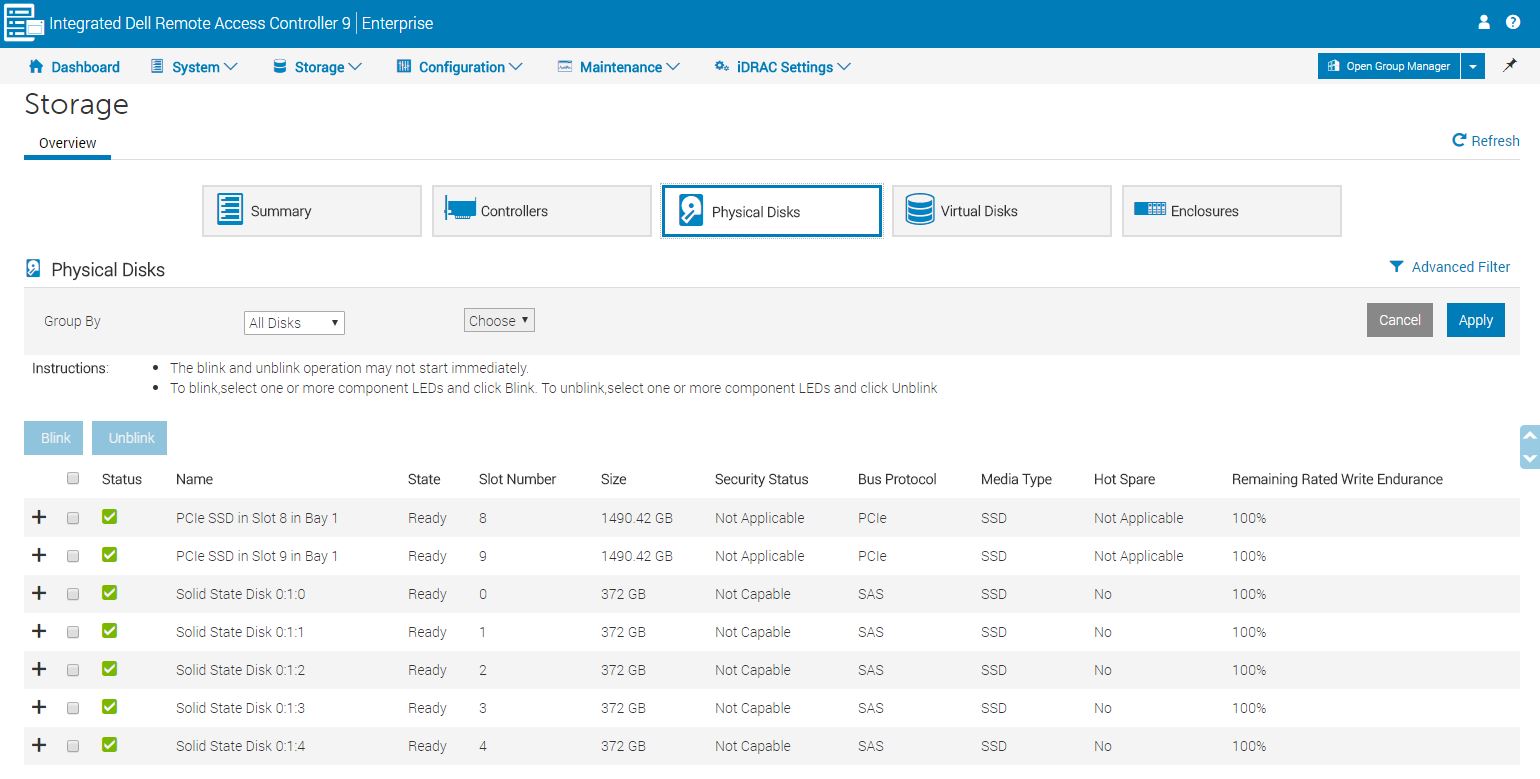
As we mentioned earlier, BIOS settings changes via iDRAC 9 is a great feature. Unlike many of the low-cost servers available, one can configure RAID setups via the web UI. No need to go through posts spamming keyboard combinations, again this is here.
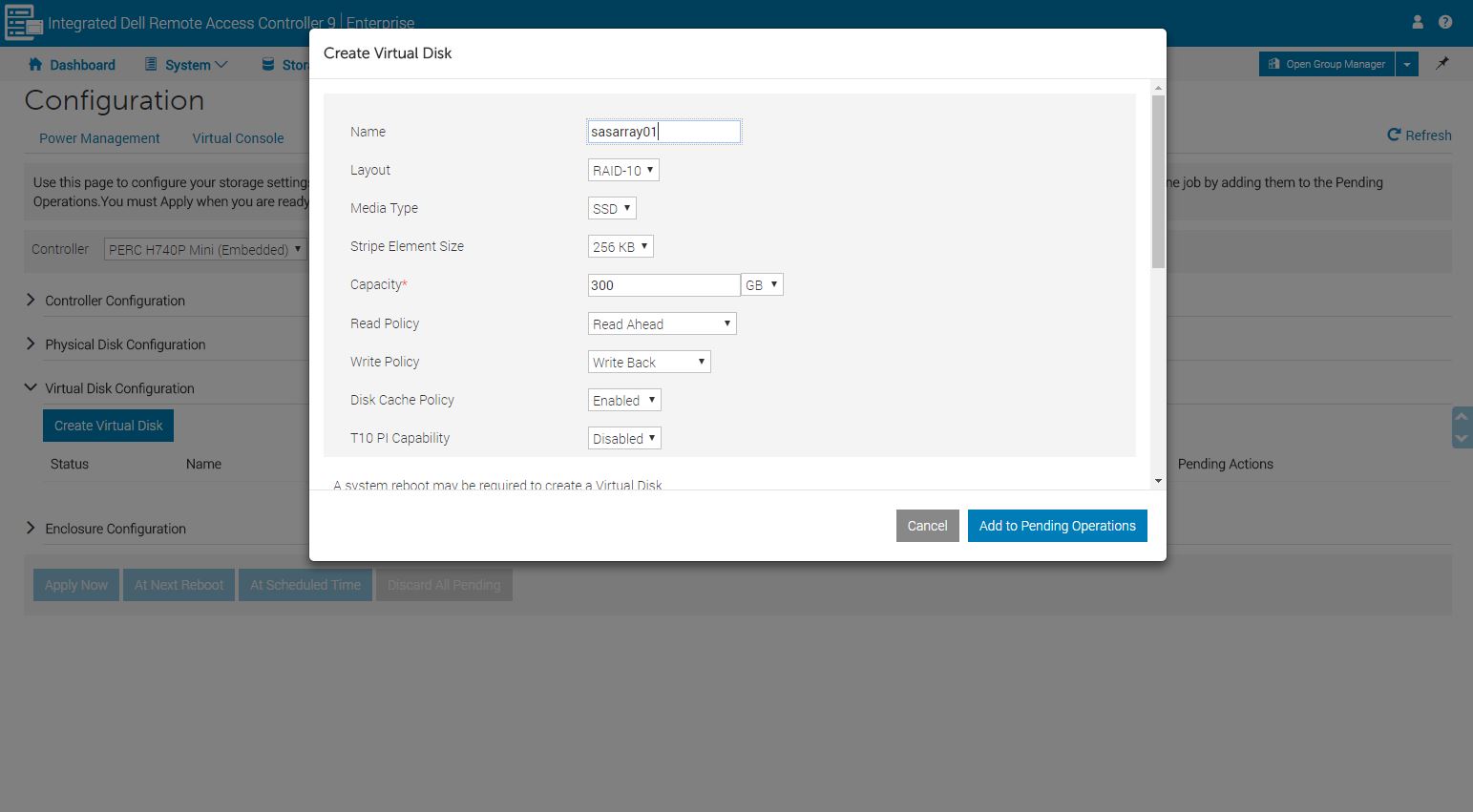
SSDs are extremely reliable, but they do infrequently fail. The storage management interface allows you to see provisioned global hot spares.
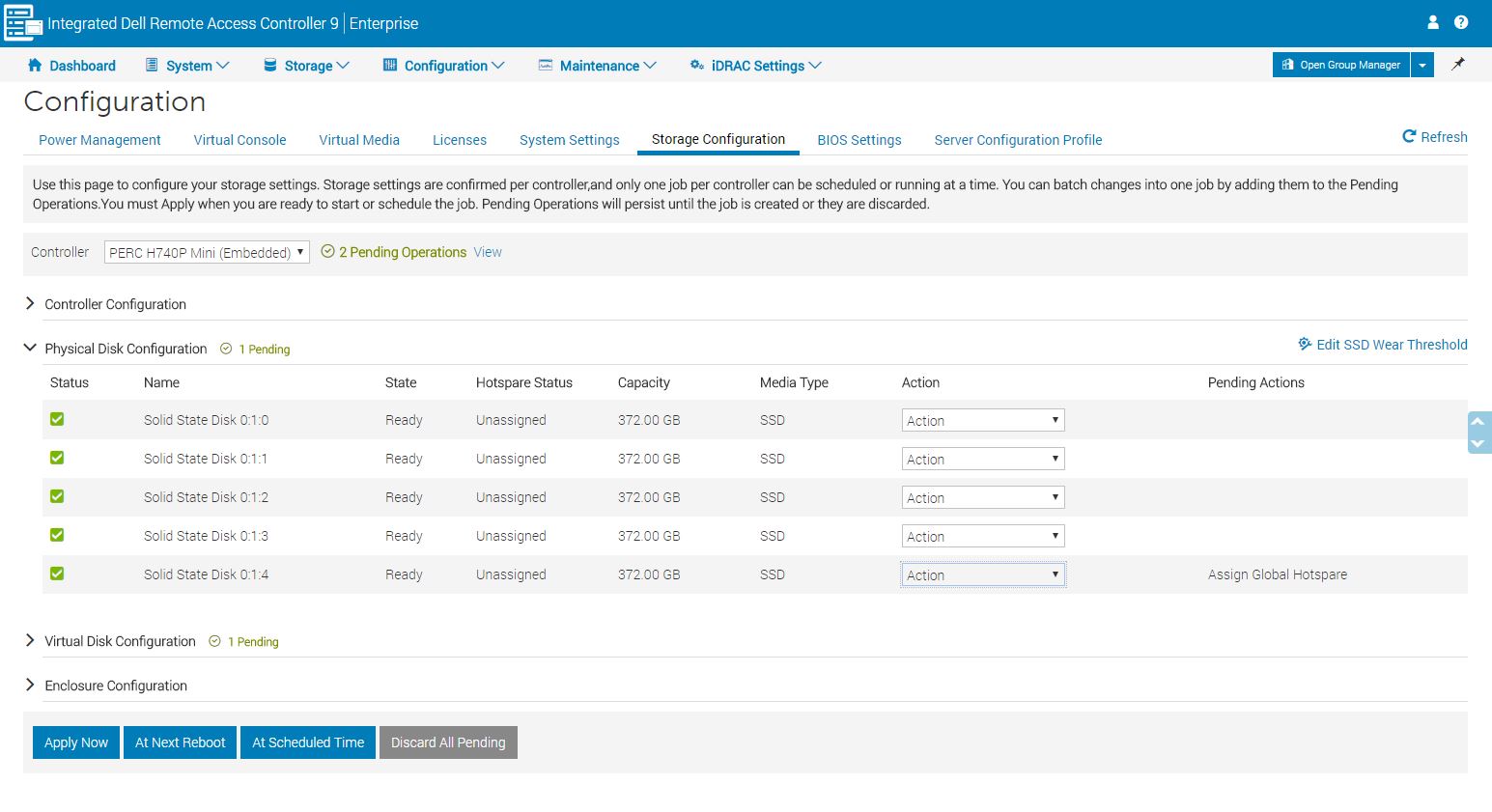
Dell EMC has a huge selection of drives intended for specific applications and has taken the steps necessary to make them easy to manage.
Dell EMC PowerEdge R7415 Networking
Our test system was equipped with a dual 10GbE (SFP+) Broadcom adapter as well as 1GbE Broadcom networking. Many of the current generation Dell EMC PowerEdge Intel servers do not come with 1GbE by default as we saw in our Dell EMC PowerEdge R640 Review.
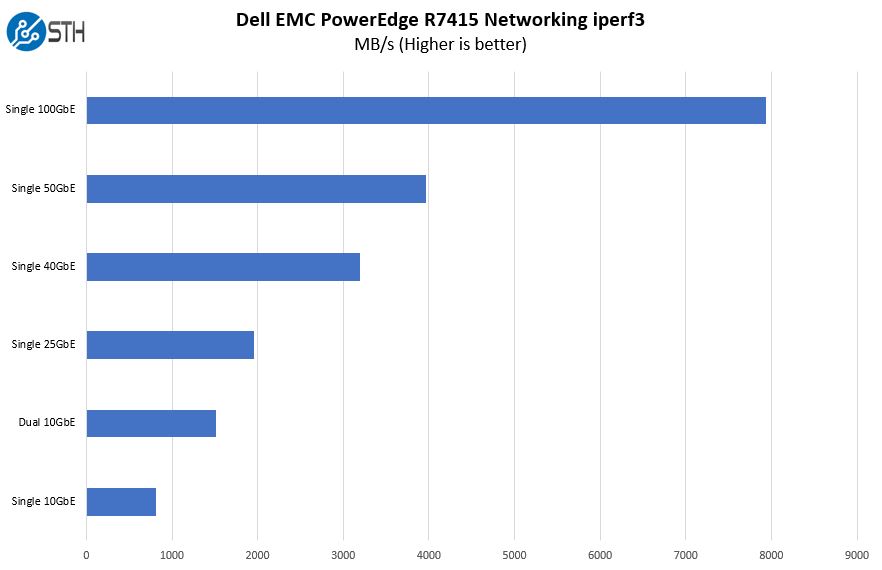
Although this is a server built around providing low-cost comptue and storage, it is still very fast. We took our lab’s Mellanox 25GbE, 40GbE, and 100GBE NICs and used them in the add-in card slots. We had no issue saturating the 10GbE LOM that came in the test configuration and performance scaled to 100GbE without issue.
Dell EMC PowerEdge R7415 Power Consumption
Our Dell EMC PowerEdge R7415 came equipped with dual 1600W power supplies. Frankly, it would have been more efficient with lower-spec power supplies but it still performed well.
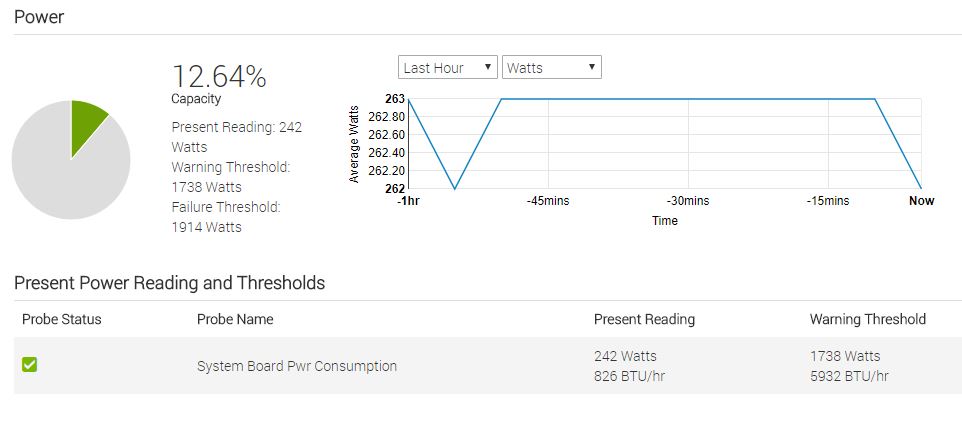
We saw a maximum power consumption figure of just shy of 400W in this configuration. At 60% load, we saw a consistent 261-264W and idle was around 170W. Note these results were taken using a 208V Schneider Electric / APC PDU at 17.8C and 71% RH. Our testing window shown here had a +/- 0.3C and +/- 2% RH variance.
For a 32 core system with 256GB of RAM a SAS3 controller, dual 10GbE, and two NVMe drives, these are great numbers.
Final Words
We go back to our opening statement that the Dell EMC PowerEdge R7415 is an insanely good server. Never before has Dell EMC offered a price/ performance single socket platform that can match what the Dell EMC PowerEdge R7415 represents. For those with Intel Xeon PowerEdge servers, you can deploy the R7415 with the same management tools that you have used for years. If you want to test AMD EPYC, the PowerEdge R7415 will be easy to integrate into your existing infrastructure.
We test more servers in our lab than anyone at this point and from more vendors. We now have over 600 AMD EPYC cores and a range of EPYC platforms from over a half-dozen vendors in the lab. After testing the PowerEdge R7415, we would have no problem moving the unit to our production data center. It has every feature we want.
Although we pointed out some small cost optimization techniques the PowerEdge team used, we agree with the direction which accentuates the value proposition of the PowerEdge R7415. Even in a cost-optimized platform, we see features like hot swap NVMe which many competitive offerings still do not have, yet which are vital to the reliable operation. The Dell EMC PowerEdge has the right mix of innovation and tradition that make it today’s ultimate 2U single socket AMD EPYC platform.




Patrick,
Does the unit support SAS3/NVMe is any drive slot/bay, or is the chassis preconfigured?
You can configure for all SAS/ SATA, all NVMe, or a mix. Check the configurator for the up to date options.
@BinkyTO
It depends on how you have the chassis configured. It sounds like they have the 24 drive with max 8 NVMe disk configuration. With that the NVMe drives need to be in the last 8 slots.
How come nobody else mentioned that hot swap feature in their reviews. Great review as always STH. This will help convince others at work that we can start trying EPYC.
The system tested has a 12 + 12 backplane. 12 drives are SAS/SATA and 12 are universal supporting either direct connect NVMe or SAS/SATA. Thanks Patrick and Serve the Home for this very thorough review… Dell EMC PowerEdge product management team
These reviews are gems on the Internet. They’re so comprehensive. Better than many of the paid reports we buy.
I take it the single 8GB DIMM and epyc 7251 config that’s on sale for $2.1k right now isn’t what you’d get.
You’ve raved about the 7551p but I’d say the 7401p is the best perf/$
Great review! Any chance of a cooling analysis (with thermal imaging)?
Impressive review
Koen – we do thermal imaging on some motherboard reviews. On the systems side, we have largely stopped thermal imaging since getting inside the system while it is racked in a data center is difficult. Also, removing the top to do imaging impacts airflow through the chassis which changes cooling.
The PowerEdge team generally has a good handle on how to cool servers and we did not see anything in our testing, including 100GbE NIC cooling, to suggest thermals were anything other than acceptable.
Great review.
Thanks for the reply Patrick. Understand the practical difficulties and appreciate you sharing your thoughts on the cooling. Fill it up with hot swap nvme 2.5″ + add-in cards and you got a serious amount of heat being generated!
Great Review! Many thanks, Patrick!